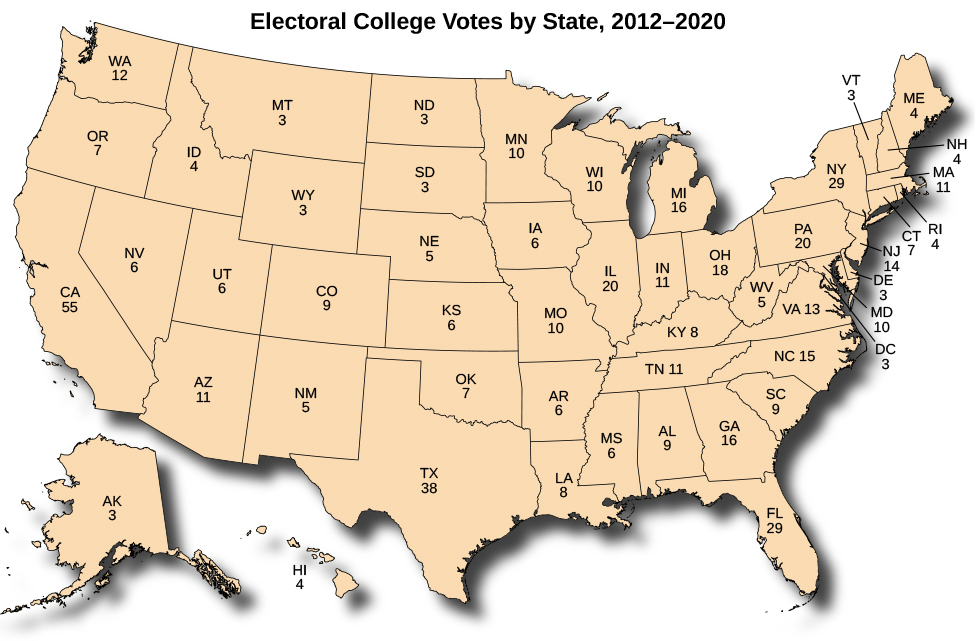Electoral College Votes by State, 2012–2020
The number of Electoral College votes granted to each state equals the total number of representatives and senators that state has in the U.S. Congress or, in the case of Washington, DC, as many electors as it would have if it were a state. The number of representatives may fluctuate based on state population, which is determined every ten years by the U.S. Census, mandated by Article I, Section 2 of the Constitution. The most recent census was conducted in 2010.


